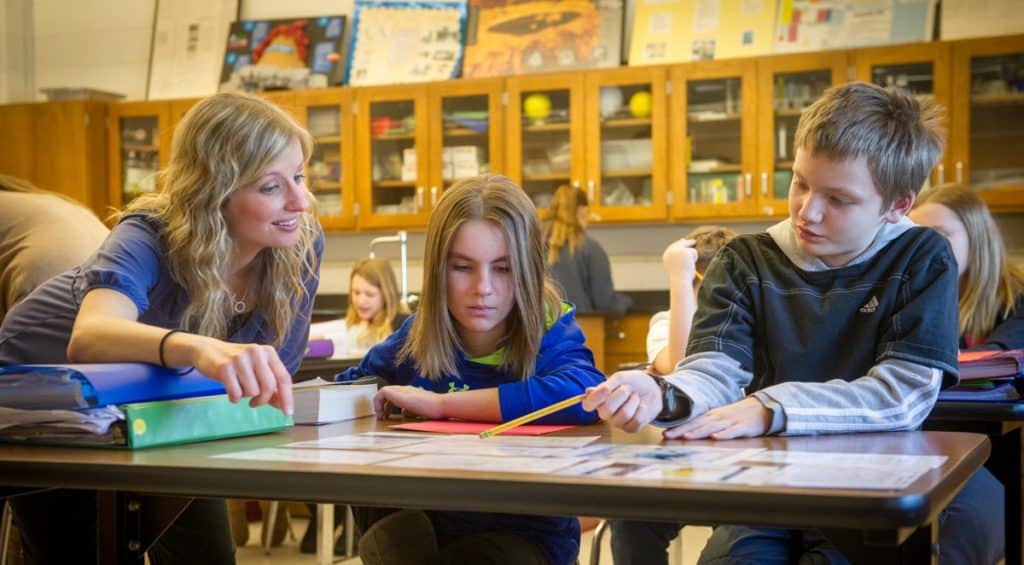
When we think of spring, we imagine birds chirping, leaves turning green, flowers blooming, and the sun shining its warmth over everything. If you are an educator, spring has a second meaning: it represents another testing season full of student worries about standardized assessments, as well as teacher stress as you look for ways to help students find success with them. Because standardized assessments can sometimes connect to funding, contract renewals, performance plans, and students being promoted to the next grade, creating multiple learning opportunities for students to be actively engaged in the review process often becomes overlooked in favor of learning based on memorization and repetition. The following are six strategies you can use to make your test preparation engaging, meaningful, and fun.
When students talk about academic content, they have an opportunity to integrate, organize, and reinforce their learning. An effective way to have students talk about content is to give them questions to answer, have them do a focused sharing with another student, or ask them to put the content into their own words. By listening, students can correct any errors or misconceptions they may hold or affirm what they’ve learned. For pairs, consider collaborative structures such as Think-Pair-Share, Think-Write-Pair-Share, Walk and Talk, or Debate Duos; for small groups, consider Table Talk, World Café, Jigsaw, or Around the Clock.
Movement is central to igniting purposeful learning in any classroom, and that is true for test preparation as well. Interactive learning structures—such as Graffiti, Swap Meet, Mix and Mingle to Music, Four Corners, and Scavenger Hunt—give students the opportunity to engage with one another in a structured way that allows for social interaction and physical movement. Creating an active and interactive environment increases students’ engagement, reduces off-task behaviors, and helps sustain motivation. Students can dig into review content with equal responsibility and practice essential speaking and listening skills, along with fundamental social skills such as cooperation and responsibility.
Graphic organizers, goal-setting charts, flow charts, flashcards, and diagrams allow students to express their thinking and knowledge. These concrete models help students form stronger mental images of concepts and ideas and understand the relationships among them. Visuals assist with the retention of information, reading comprehension, and critical thinking skills, all of which support test preparation.
Over the years, paper and pencil tests have been slowly replaced with computer-based programs for standardized assessments. For test preparation, technology can play many roles. It can target instruction, provide individualized opportunities for students to practice specific skills, and expose students to online testing structures with technology-enhanced items. Gamification in these programs makes review and practice activities engaging for students and can help tap into students’ intrinsic motivation.
Testing season can bring on a tremendous amount of stress for teachers and students alike. If students are already experiencing other types of stress, test preparation can heighten the emotions derived from the fight-or-flight impulse. Incorporating playfulness in the classroom can help students feel more comfortable and at ease. Brain breaks or energizers are quick, whole-group activities that get students moving, breathing deeply, laughing, thinking, and working together. They provide students with mental and physical breaks that help refocus their thoughts and energy on the next task. Relaxation practices and techniques such as meditation, yoga, deep breathing, stretching, and tactile grounding are great strategies to teach for reducing stress levels.
Often we think of reflection as a quiet, solitary act. But reflection can take place when students engage in teacher-facilitated writing activities, art activities, social media activities, or conversations with peers. Rather than simply recounting or restating, the purpose of reflection is to have students become aware of how they learn, take more responsibility and ownership for learning, and notice their strengths and ability to learn and grow. During test preparation, students can assess what strategies are working and not working for them and explore other strategies that will help them retain information.
Michelle Benson is the Responsive Classroom Chief Professional Learning Officer.